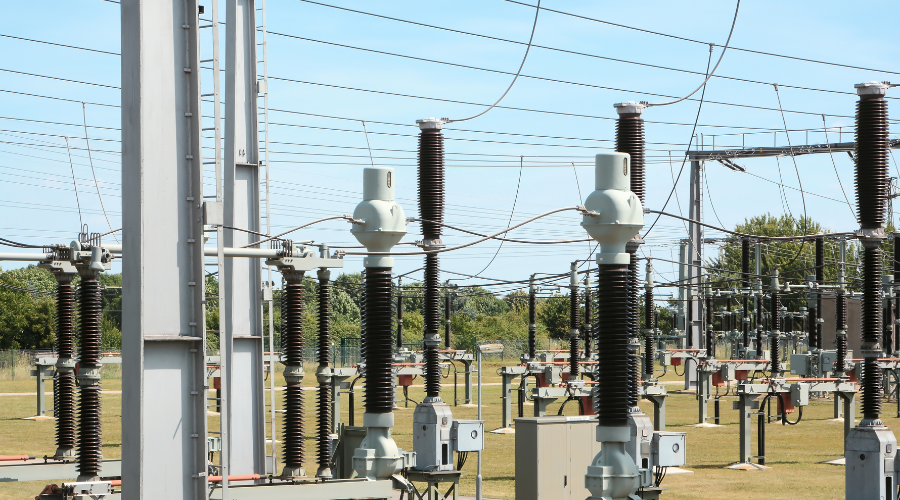Differences Between Distribution and Power Transformer Substations
- dsjenergyl
- Jul 14
- 4 min read

In the modern world of electrical infrastructure, substations play an essential function in maintaining that energy flows seamlessly from generation plants to our homes, offices, and industries. Among the various types of substations, distribution and power transformer substations are two of the most widely discussed. While they may seem similar on the surface, they serve very different purposes within the electrical grid. In this blog post, we’ll break down the key differences, explore their unique functions, and provide real-world examples to make these ideas more understandable.
And if you’re looking for advanced, reliable infrastructure solutions, many projects are now sourcing equipment from a China transformer Substation manufacturer due to growing trust in their quality and innovation.
What Is a Transformer Substation?
Before we dive into the differences, let’s clarify what a transformer substation actually is.
A transformer substation is a facility in the power system that transforms voltage levels to either step up (increase) or step down (decrease) the voltage based on demand and supply needs. These stations act as intermediaries between power generation and electricity consumption, ensuring stable voltage transmission and efficient energy distribution.
What Is a Power Transformer Substation?
A power transformer substation is generally located near power generation stations or at strategic points in transmission networks. Its primary job is to step up the voltage for long-distance transmission.
Why is this important? When electricity travels long distances, higher voltages reduce energy loss. That’s where the power transformer comes in — boosting voltage levels so that power can move through high-voltage transmission lines efficiently.
Main Characteristics:
Handles very high voltage levels (typically 132 kV and above)
Installed near generation plants
Ensures minimal transmission losses
Equipped with large transformers and cooling systems
Mainly found in rural or isolated areas, not near end-users
What Is a Distribution Transformer Substation?
On the flip side, a distribution transformer substation is used to step down the voltage to levels suitable for residential or commercial use. These are often located closer to the consumers, such as in towns, cities, or industrial parks.
Their main job? Making sure the electricity you receive at home is safe and usable.
Main Characteristics:
Operates at medium to low voltages (11 kV, 6.6 kV, or 415V)
Installed in urban, suburban, and industrial areas
Delivers electricity directly to end-users
Typically has a smaller equipment footprint
Often mounted on poles or small enclosures
Key Differences Between Distribution and Power Transformer Substations
Here’s a straightforward comparison to help you visualize the differences better:
Aspect Power Transformer Substation Distribution Transformer Substation
Purpose Step-up voltage for long transmission Step-down voltage for local usage
Voltage Range 132 kV and above 11 kV or lower
Location Near power generation stations Near residential or commercial consumers
Size of Transformers Very large Relatively small
Cooling System Required Yes, due to high load Often air-cooled
Operation Type Works round-the-clock at full load Operates at variable loads
Energy Loss Considerations Minimizes transmission loss Minimizes distribution loss
Why Understanding the Difference Matters
Knowing the difference between these two types of substations is crucial for:
Engineers and planners who need to design systems with the right specifications.
Government and regulatory bodies, setting safety and performance standards.
Businesses, deciding on suitable power sources for industrial operations.
Investors, who want to fund the right infrastructure at the right scale.
Understanding their roles helps in making informed decisions that optimize efficiency, cost, and safety in power systems.
Emerging Trends in Transformer Substations
With rapid urbanization and digital transformation, there’s a growing demand for smart substations that integrate IoT, real-time monitoring, and predictive maintenance. Especially in areas like China, advancements in automation and digitization have enabled transformer substations to be more intelligent, efficient, and environmentally friendly.
Additionally, as the world shifts towards sustainable energy options, substations are adapting to handle intermittent loads, bidirectional flows, and energy storage integration.

Choosing the Right Substation for Your Needs
Selecting the appropriate substation depends on various factors:
Load size and type
Distance from the energy source
Environmental considerations
Budget and maintenance capacity
For large-scale transmission from a remote solar or wind farm, a power transformer substation is ideal. For supplying power to a residential colony, commercial complex, or small factory, a distribution substation fits best.
Conclusion
In the world of electrical distribution, both power transformer substations and distribution transformer substations play unique and essential roles. While power substations are the muscle behind long-distance, high-voltage transmission, distribution substations are the final link that delivers usable electricity to homes and businesses.
Understanding their differences not only improves the planning and design of electrical systems but also helps in building smarter, more efficient infrastructure. Whether you’re a professional in the field or simply curious, knowing how these systems work is key to appreciating the power behind the plug.
FAQs
1. What is the main function of a power transformer substation?
The primary role of a power transformer substation is to increase voltage levels for efficient long-distance power transmission with minimal energy loss.
2. Why are distribution substations located near consumers?
Distribution substations are closer to users because they step down the voltage to safe levels (like 415V), making it suitable for residential or commercial consumption.
3. Can one substation serve both power and distribution roles?
Some hybrid substations may handle both functions, especially in multi-tier grid systems, but typically, the two roles are separated for performance and safety reasons.
4. How are modern substations different from older ones?
Modern substations now include smart features like remote monitoring, automation, and predictive maintenance to improve efficiency, reliability, and safety.
5. Why is voltage stepped up and then stepped down again?
Stepping up reduces energy losses over long distances. After reaching the destination, the voltage is stepped down for safe, end-user consumption.







Comments